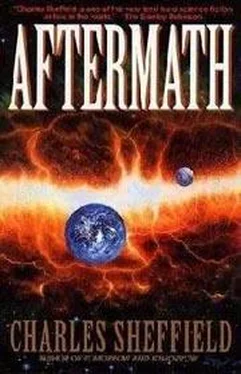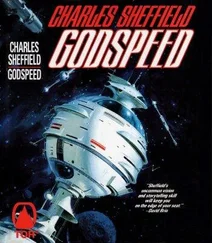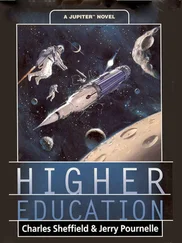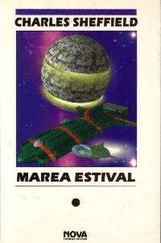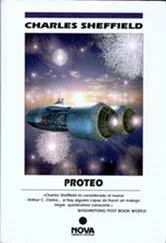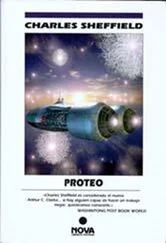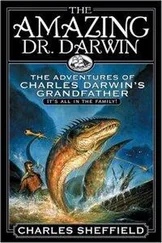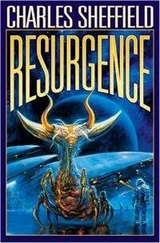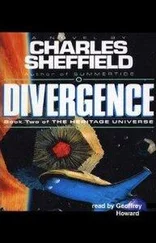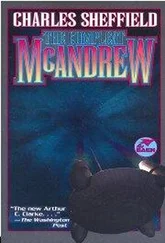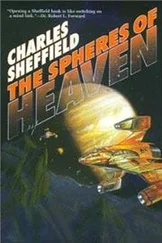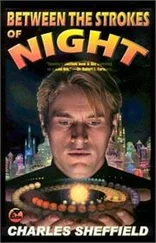Seth showed his teeth, though it was hard to call it a smile. “You plannin’ to fly, baby?”
“No. There’s more routes in the world than you’ll find on a map like this. We’ll use the storm drains. And though a road can go up and down, water only runs downhill. That’s why you have to look at the contour lines.”
“The sewers ,” Seth said. “You want to run through the sewers and be knee-deep in shit? Do you know what you’re suggesting?”
“Sewers and storm drainage systems aren’t the same thing at all. They use the same underground paths a lot of the time, but you keep them apart when you can. As for knowing about them, I’d say I do. It’s one way I make my living.”
“Eh?” Dana stared. “Have you been lying to me? You told me you were a network and feedback analyst.”
“I am. What do you think a storm drainage system is? It’s nothing but a big, complicated flow network. It happens to work with water, not electricity, but the basic principles are the same. You have line-carrying capacities, and variable loads, and peak load shunting. If you want to you can even make switches and amplifiers, through a thing called the Coanga Effect. But I won’t get into that.” Art spoke to Dana. “I admit I may have misled you a bit. I work with both electrical and water networks — and others, too, like oil and gas pipelines. But don’t you think ’telecommunications network specialist’ has a nicer ring to it than ’water and sewage network specialist’?”
“You just didn’t want to tell me you worked in the sewers.” Dana smiled at Art. “But is it safe to go into the storm drains now, after the supernova? How can you be sure that everything is still working? I mean, the whole power system is down, and I’d think the storm drains would be dependent on it.”
“Not in this universe. You won’t find electricity used, except here and there for maintenance. Think of it, Dana. In normal times, when is the electrical power in an area most likely to fail?”
“When you have high winds and a bad storm.”
“Right. The last thing you want is a storm drain system most likely to fail when you need it most. The engineers don’t assume electrical power is available when they design flood control and storm drainage networks. They assume the opposite — that no one will have power when the storms and floods are at their worst. Everything is controlled by the water loads themselves, through volumes and pressures and feedback to spillways and control gates.”
“You’re dead serious, aren’t you?” Seth had become very still. “You think we can do it this way.”
“I know we can. But if you have a better idea, I’ll take it. I don’t want to be Harry Lime any more than you do.”
Art didn’t expect the others to catch the reference, but Dana smiled and said, “Great movie. Maybe we’ll go see it when this is all over. I’m persuaded. Now tell us the snags.”
“The main thing that worries me is finding a good entry point to the storm drain system. We’re not water, we need a hole big enough for us to get through. There has to be one within half a mile at the most, for service access, but it might be hidden by snow. I’ll go out now and search.”
“Us, too?” Dana asked.
“Waste of time. You wouldn’t know where to look. You stay here and get things together. Once we’re in the storm drains, the underground part shouldn’t be hard. There are walkways — narrow and low, but big enough for a person. All we do is follow the direction of flow, and that takes us to a river discharge point.”
“After you find the entry point, how soon can we leave?” Seth stood up.
“At once. Snow and cold weather help, because we’ll find very low runoff levels. But we’d better not be down there when the thaw starts.”
“Not a chance.” Seth touched the stove, snarled, and pulled his finger away. “Gotta cool this sucker off in the snow. Don’t worry none about the thaw. Before that happens we’ll be there and thaw old Ollie. He’ll tell us what to do about the telomods, and we’ll be back in business.”
Not a word about whether or not old Ollie would choose to cooperate, Art thought as he muffled himself up to go outside. Would they be able to find the man, even if they reached the syncope facility? How do you find one convicted criminal among umpteen thousand others? What did Guest look like, even before he went into judicial sleep?
Art didn’t recall the media pictures. A murderer could look like anyone.
Even Seth Parsigian.
They faced tough decisions before they left the Treasure Inn. There would be no tractor, no motorbike. Everything had to be carried on foot for an undefined distance.
Even the little stove was too much of a luxury. So was alcohol — a food of sorts, but not a nutritious one. Blankets and pillows were not heavy, but they were bulky.
The final list almost defined itself. Clothes, as many as you could stand to wear or to carry in a single bag. One thick blanket each. Food, but only in its most compact form: dried rice, ham, bread, cheese, and dried beans. Weapons, just in case.
At the last moment Art added a compass, candles, and the maps to his own load. He was sure to need light at some point, and the maps could fold to fit easily into his pocket along with his knife. As he packed away the first one, he noticed Seth Parsigian holding the map that showed on it the marked location of Art’s house in Catoctin Mountain Park. Seth had handed it casually to Art, but the look on his face was more calculating than casual.
Dana and Seth had their own small group of “luxury” items. In her case it was soap, a hairbrush, and the long wrench she had used to break into the Institute. Seth had his hunting knife, pliers, and a flashlight that produced electricity not from batteries but by turning a hand crank to drive a generator.
A child’s toy last Christmas — but not today. Seth used the flashlight to guide their way down the ladder and into the storm drain. Art looked carefully around. He saw debris left by recent high waters, but the level had receded a long way and the walkways were dry.
“This is better than I expected. It shouldn’t be too difficult, all we need to do is follow the incline. Flat and down are all right, but we avoid any upward slopes.”
Seth nodded and led the way. The storm drain tunnel was clammy and icy cold, but since they were all wearing extra clothes that was not a problem. After the first hundred yards Art dropped a few steps behind the other two. His knee was feeling pretty good, but he didn’t know how far he might have to walk on it. He would prefer an even, steady pace, and no wasted steps. Whoever was in front had to make occasional side trips, when neither the compass nor the direction of water flow made the choice of branch clear.
Seth didn’t seem to mind being asked to lead. The storm drain tunnels added a strange booming echo off walls and ceiling, and after half a mile he began to sing as he walked. It was a dirge about two people called Saunders and Margaret, and the verse went on and on.
“That’s Clerk Saunders he’s singing.” Dana had dropped back to walk just in front of Art. The path was not wide enough for two, and she had to turn her head to talk to him. The tunnel was not totally dark even without the flashlight, since every thirty yards or so the narrow grille of a storm drain, blocked by snow, admitted a diffuse, pearly light.
“It’s a Scots/English border ballad,” she went on. “All death and misery. First time I ever heard it with a West Virginia accent. I’ve never known Seth to sing before, either. He must be feeling good.”
“Look where you’re going,” Art said gruffly, “or you’ll be in the water.” He was ashamed to say what he was actually thinking. The world had gone to hell, but he was feeling good. Better than when he left Catoctin Mountain Park.
Читать дальше
